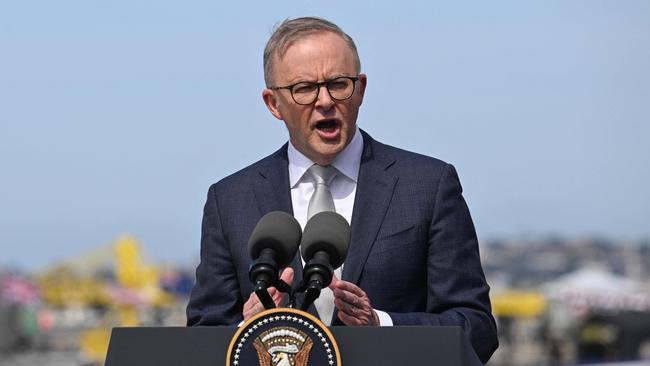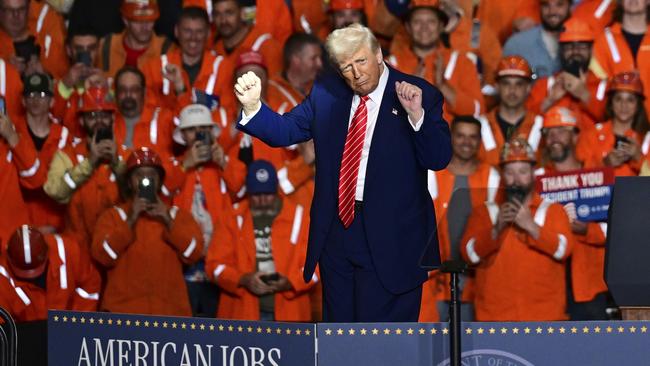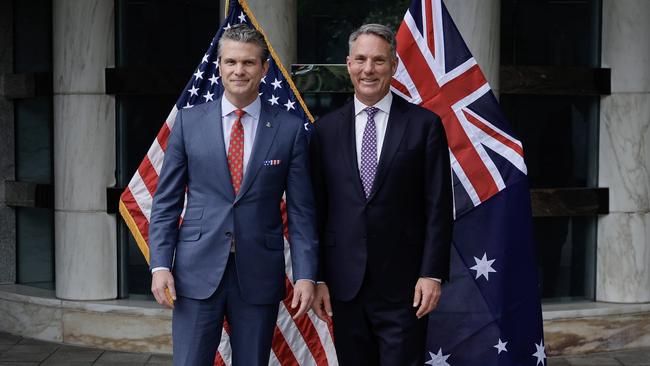
Anthony Albanese’s first face-to-face meeting with US President Donald Trump will happen in Alberta, Canada, at the mid-June G7 meeting. It would be astonishing if Albanese didn’t go on to visit Trump in Washington DC.
In the past, Australian prime ministers and US presidents were in regular phone contact – think of Malcolm Turnbull and Trump in his first administration – and passing messages via their ambassadors. Albanese’s direct contact with Trump has been two phone calls: one in November and one in May (Albanese has alluded to a third call without offering any detail). Ambassador Kevin Rudd has wide access to political leaders in Washington, but not directly to Trump.
Given the closeness of the alliance and the huge AUKUS submarine project under way, the lack of leadership engagement is astounding. Albanese went out of his way to avoid meeting Vice-President JD Vance in Rome at Pope Leo XIV’s inauguration: “Well, I’m the Prime Minister. I meet the President of the United States.”
The hesitancy to engage our closest and most important security partner goes beyond the leaders’ obvious political differences. Trump and UK Labour Prime Minister Keir Starmer successfully looked beyond their political instincts to find common ground.

I suggest two factors are playing on Albanese’s mind. First, and perhaps not unreasonably, he wants to avoid an Oval Office meltdown of the type Trump handed to Ukraine’s Volodymyr Zelensky and South Africa’s Cyril Ramaphosa.
Trump could find many areas of disagreement: Israel and Gaza, Albanese’s soft-touch policy on China, Trump’s “unfriendly act” on tariffs, Labor’s position on net zero and decarbonisation, and the long list of personal criticisms mounted by Labor figures against the President.
Most importantly, Trump is likely to press Albanese to lift defence spending. US Defence Secretary Pete Hegseth has twice politely raised this issue with Richard Marles. Defence spending is currently 2.05 per cent of gross domestic product, on a languid path to reach 2.4 per cent in eight years. No one outside government – and, in fact, not many inside government – believes that is an adequate response to our strategic situation.
Imagine an Oval Office meeting where Trump defers to JD Vance – jilted for being too junior to meet Albanese in Rome – who blasts Australia for not pulling its defence weight. Albanese is not quick on his feet in debating. Unlike Starmer and Canada’s new Prime Minister, Mark Carney, he doesn’t have the verbal quickness to win a point while defusing tension.
Marles claims to be “very much up for the conversation” with the US about Australian defence spending. But Marles has lost every conversation he’s had with cabinet colleagues about increasing spending. There is no sign Albanese is ready for that discussion. Albanese was absolutely right to say on Sunday that “we’ll determine our defence policy”, but it is an indictment of Labor’s approach that our under-investment in security is concerning Washington. It should never have come to this point.
Aside for the potentially difficult optics of a testy Oval Office meeting, I suggest there is a second reason for Albanese wanting to limit direct contact with Trump: it is that Albanese wants to put more distance in the US relationship. Albanese got a significant popular lift in the election campaign by claiming that Peter Dutton was closer in style to Trump. He claimed on election night “We do not need to seek our inspiration overseas.”
What Trump wants from Albanese – more defence spending in the short term, closer military-to-military engagement, faster progress on AUKUS and a tougher approach on China – are things Albanese clearly does not want to concede. What Albanese would like to do is keep the focus on the long-term prospects of AUKUS. How long-term is that? Understand that the crew of the first AUKUS nuclear-powered submarine is not yet born, or just learning to watch Bluey.
Albanese got the sweetest alliance deal of all time when the Biden administration tacitly accepted that Australia’s focus on delivering AUKUS in the later 2030s took priority over military readiness in the mid-2020s.
What is clear from Hegseth’s speech at the Shangri La Dialogue, now concluded in Singapore, is that the Trump administration is focused on immediate security threats. Hegseth made a strong defence of US engagement in the Indo-Pacific. That should come as a relief to allies, but the Defence Secretary insists on two points Albanese would rather avoid.

First, “a threat gathers” – Communist China “seeks to become a hegemonic power in Asia, no doubt. It hopes to dominate and control too many parts of this vibrant and vital region”.
Contrast that with Marles’s confused word salad of a speech at the same gathering. He worried that China is acting “without providing any strategic transparency or reassurance” that this can be helped by “preserving and building the interdependencies among states in trade, investment, ideas and people”.
There is no confusion in Hegseth’s mind: “The threat China poses is real, and it could be imminent. We hope not, but it certainly could be.” Hegseth wants allies to face these “hard truths”, while Marles talks in obscure language about “securitisation, which imposes only binary options and counterintuitively undermines deterrence”.
The second focus in Hegseth’s speech was defence spending. He pointed to “our model allies like Poland, Israel and the Gulf states, the Baltic states”. What unites this group is that they spend around 5 per cent of GDP on defence. “It does not make sense for countries in Europe to do that while key allies in Asia spend less on defence in the face of an even more formidable threat.”
Hegseth’s position is tough but entirely consistent with a policy of America engaged in the Indo-Pacific, building military strength and working with competent allies focused on deterring China.
This runs counter to Albanese’s “stabilised” relations with China, a plan for AUKUS on the never-never, and hollowed-out current military capability.
Albanese can pretend that “what we’ll do is continue to invest in our (defence) capability”, but the numbers reveal a different truth. The Americans are acutely aware of the gap between reality and rhetoric. That’s the conversation Albanese wants to avoid in the Oval Office.
Peter Jennings is director of Strategic Analysis Australia, an adjunct fellow at the Institute of Public Affairs and a former deputy secretary for strategy in the Defence Department.






